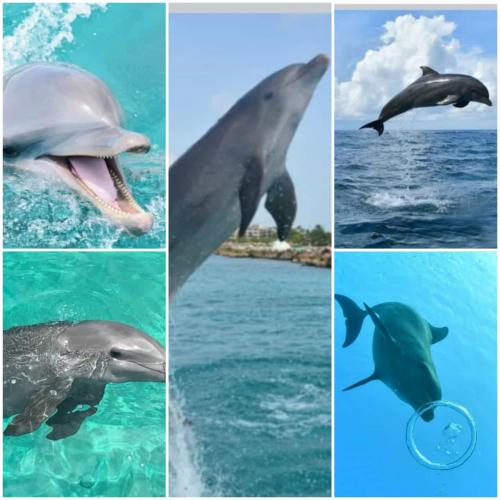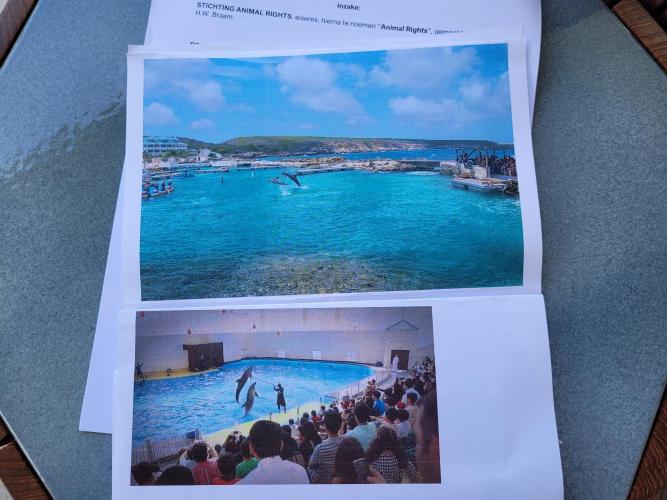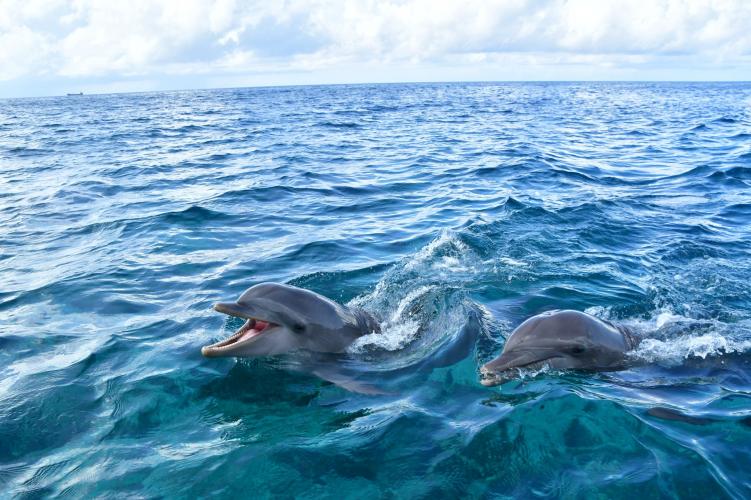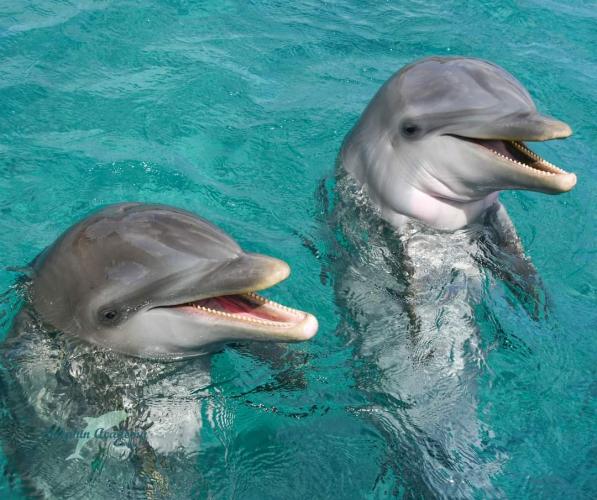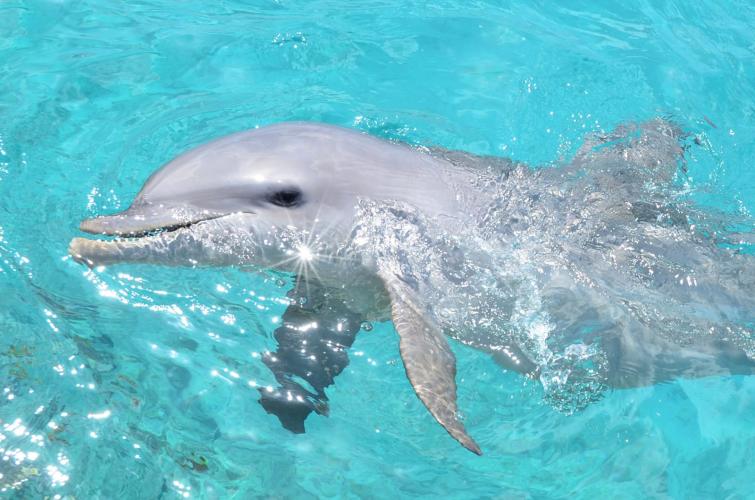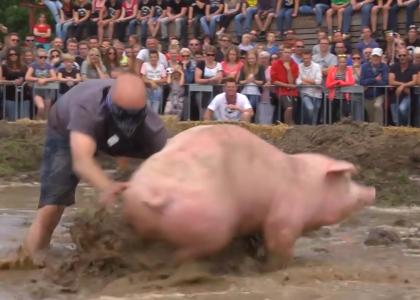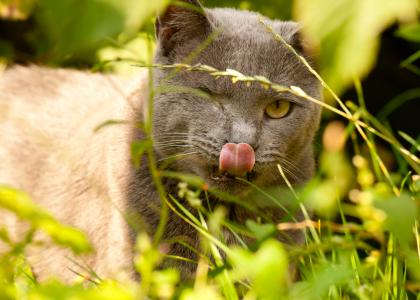Inhoud
Timeline - Animal Rights fights for Curaçao dolphins
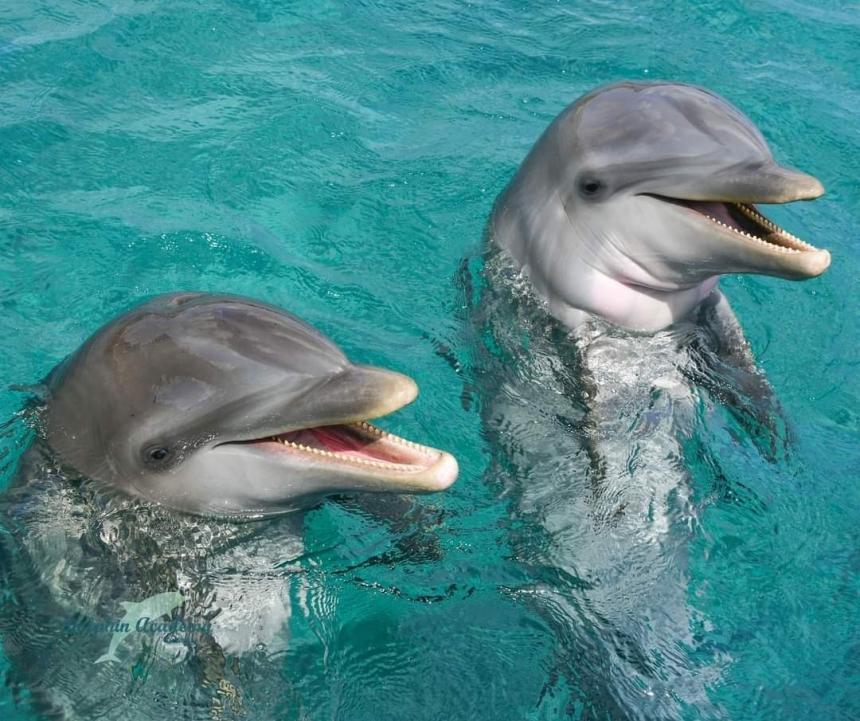
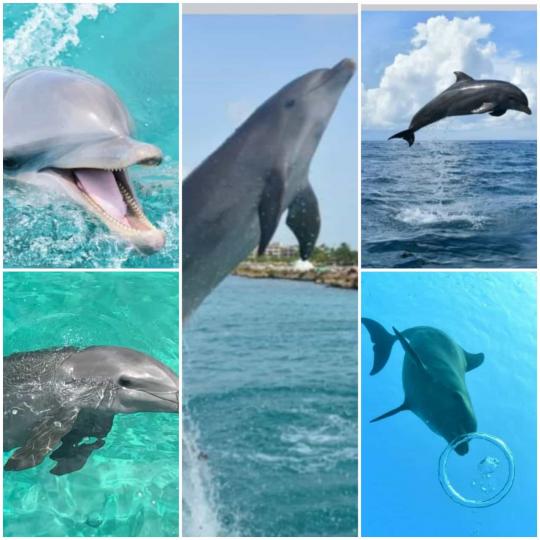
SAMI, MOSA, SERENA, MACHU & LUNA
In April, Animal Rights received a tip that 5 young bottlenose dolphins, (Sami, Mosa, Serena, Machu and Luna - 3 females and 2 males) were sold and would be taken from their home and transferred to a concrete tank in the desert at the Fakieh Aquarium, in Jeddah, Saudi Arabia. The transfer by plane was expected to take place on 24 or 25 April.
Animal Rights immediately asked both the Fakieh Aquarium and Dolphin Academy Curaçao for a response or confirmation. No reply was received from Jeddah, Dolphin Academy did not want to comment over the phone, but did not deny.
After we issued a press release about this in Curaçao, the following response came from Dolphin Academy:
"Dear Ms. Hartland,
Thank you for your interest in our organization. We can inform you that we are considering to reduce the numbers of dolphins we are working with and are investigating all the options to lower this number. There are several possibilities that we are looking into. In due time we hope to be able to release more information.
Kind regards, Team Dolphin Academy"
Industry Greed
"Animal Rights suspects that Sea Aquarium/Dolphin Academy Curaçao is trying to compensate for lost income due to the corona pandemic with Saudi money and is sacrificing the interests of the dolphins to this,” said Animal Rights director Susan Hartland. “This is unjust and unacceptable!” The Sea Aquarium/Dolphin Academy Curaçao also claimed that they have too many dolphins:
According to a spokesperson for Seaquarium/Dolphin Academy Curaçao, the company had been looking for a solution for "the too large number of dolphins that are being worked with" for a long time.1
The Sea Aquarium/Dolphin Academy Curaçao still has not provided any information on how they will keep the remaining animals from breeding. Animal Rights wonders why dolphins are bred at all.
Worse living conditions
Captivity, of course, is always cruel to these intelligent, sociable animals that travel long distances in the wild, catch live fish and live in family groups. But in Curaçao at least the dolphins still live in relatively natural lagoons in the Caribbean Sea and in the past the animals were allowed to swim in the open sea now and then. In Jeddah they are sentenced to a concrete swimming pool in the desert.
In Curaçao, animal rights activists are able to keep access to the animals with the option of having them moved to a marine reserve in the future; in Saudi Arabia, that possibility will most likely have been lost.
Emergency Summary proceedings: Do not send Curaçao dolphins to a concrete tank in Saudi Arabia
On Sunday, May 31, 2022, Animal Rights filed an emergency summary proceedings to block the export of dolphins from Curacao to Saudi Arabia.
Through the summary proceedings, Animal Rights tries to save Serena, Machu, Mosa, Sami and Luna, as the young dolphins are called, not only the stressful, more than twenty-hour flight, but also to save them from a miserable existence in a concrete chlorine bath in the Arabian desert where they have to perform tricks for the public.
Reliable sources told Animal Rights that the dolphins had already been separated in recent days and were only fed and treated by their new Saudi "trainers" who came over in preparation for the trip. With this separation, the animals were already experiencing stress and showing deviant behavior.
Verdict
On June 3, the judge in Curaçao announced that Animal Rights had won the summary proceedings. The five young dolphins Serena, Machu, Mosa, Sami and Luna were not allowed to be flown to Saudi Arabia for the time being.
Until a valid and adequate export permit has been issued
Sea Aquarium was not allowed to export dolphins to the Fakieh Aquarium in Jeddah. Sea Aquarium's lawyers claimed during the hearing that the necessary permits for the transport had already been issued to the owner of the dolphins. However, it was not clear who the exact owner of the five dolphins was - despite the insistence of the judge and Animal Rights they refused to state who the owners were. The permit was also not presented.
The judge concluded that Sea Aquarium can be regarded as executing the transport of the dolphins. According to the judge, it is irrelevant that they are not the owner. "It would have been in the way of Sea Aquarium to submit or give access to it, insofar as there is such a permit," said the judge.
If the transport is continued despite the ban, there could be a penalty of 200,000 guilders (about 103,000 euros) per dolphin and the possibility of fines for each day they are gone.
An aquarium that takes animals from the brutal Taiji drive hunt lacks a moral compass
Fakieh Aquarium. An aquarium with a bad reputation
What we know about Saudi Arabia's only aquarium doesn't bode well. On October 9, 2012, Fakieh received six wild-caught dolphins from the infamous Japanese dolphin slaughter village of Taij. The dolphins are said to have been driven into the 'Cove' a month earlier and captured. A documentary, The Cove, was created about this brutal hunt. In Jeddah they were given the names Maria, Sara, Faris, Fis Fis, Sukkar & Gammar and were 'trained' there by Spanish and Mexican trainers.
“An aquarium that takes animals from this brutal drive hunt lacks a moral compass,” said Animal Rights Director Susan Hartland. These dolphins have all died in recent years and the dolphin shows in Jeddah have been discontinued for some time. Animal Rights heard from several sources that it was the desert sand in the lungs that caused their early deaths, but no-one can speak on record. And clearly it didn't matter to the 'owners' of these 5. Hence the purchase from Curaçao.
Dolphins transported to Saudi Arabia anyway and a second lawsuit
On June 7, the animals were rushed to Jeddah in the middle of the night. It turned out that an export license had already been issued, but not made known to the court.
On Tuesday, June 28, Animal Rights appeared in court for the second time to save the 5 young dolphins from a short and miserable existence. Animal Rights lawyer, Bertie Braam, had asked the judge to suspend the permit, but was now faced with a fait accompli. She suggested that the merits of the case be dealt with as soon as possible. This will take place on September 7.
One of the five, Mosa, has already died
One of the five Curaçao dolphins sold to the Fakieh Aquarium in Saudi Arabia in June has died. Seven-year-old Mosa has taken her own life in her basin in Jeddah.
The female dolphin Mosa swam with great speed against the wall of the basin in which she was trapped. This was captured on camera. The gigantic blow led to internal bleeding that proved fatal to the bottlenose dolphin. According to the Fakieh Aquarium in Jeddah, "the transition from adolescence to sexual maturity" was the reason the animal no longer wanted to live. Animal Rights suspects that the cause lies elsewhere.
Campaign coordinator Anna Krijger. "We are shocked, but not surprised. Keeping such large and intelligent animals in small basins is a horrific form of abuse. Dolphins are known to consciously or unconsciously self-mutilate or take their own lives under these circumstances.1 Moreover, the suggestion that the animal was so bothered by her hormones that she wanted to do something to herself is completely out of the blue."
Mosa is seven years old. In the wild, tumblers can live for about twenty years.
The trade in dolphins must come to an end immediately. These animals do not belong in concrete boxes in which they have to do tricks for the public. Do not participate in this terrible suffering and do not visit a dolphinarium anywhere in the world
EXPERTS REJECT STRANGE EXPLANATION FOR MOSA'S DEATH
Animal Rights asked several international experts to respond to the case. No expert had ever heard of the relationship between "active hormones" and self-injury. There are other factors that they believe may have played a role.
Dr. R. Mason Payne, wildlife veterinarian at Peta Foundation, United States
"It's a sad case. As far as I know, there has never been a case reported in which a dolphin did something to itself because of problems with hormones or ovulation. There are known cases where dolphins damage themselves or take their own lives, but they all related to poor living conditions in captivity, such as isolation or too small basins. It's difficult to pinpoint the exact causes of self-harm, but at least it's a sign of a poor emotional state."
Dr. Lori Marino, neuroscientist, cetacean expert and director of Whale Sanctuary Project, United States
"I have never heard of a dolphin taking its own life because of hormonal problems. This sounds like the dolphin was under a lot of stress or was scared and panicked."
Dr. Naomi Rose, marine mammal scientist at Animal Welfare Institute in Washington DC, USA
"Scientific literature says nothing about the connection between hormonal changes and Mosa's behavior. Like all other mammals, dolphins can experience dysregulation through puberty, but this does not lead to suicidal or self-harming behavior. The argument is simply illogical, and such behavior would have already disappeared by natural selection. Either way, seven-year-old female bottlenose dolphins are already considered sexually mature."
Animal Rights is grateful that the renowned experts wanted to look into the matter and sees once again confirmed that the dolphins in Saudi Arabia live in terrible conditions and therefore have to leave as soon as possible.
Animal Rights continues to fight for justice
On 7 September, Animal Rights will once again face the former 'owner' of the dolphins in court: the substantive case against the Seaquarium will then be heard. Animal Rights has been resisting the sale and transfer of the five dolphins to Jeddah for months.
Animal Rights is deeply saddened by Mosa's death. Campaign coordinator Anna Krijger: "In the knowledge that the dolphins would have a terrible existence in Saudi Arabia, we did everything we could to stop their transfer. Unfortunately, that did not work out. Mosa's tragic death could easily have been prevented, but for her 'owners' only financial gain counted."
It is not known for what amount the dolphins were sold to Saudi Arabia. However, it is clear that huge amounts of money are involved: the transfer of the dolphins alone cost a million dollars. Trained dolphins are also particularly valuable.
After we tried to prevent the transfer of the dolphins in June by means of summary proceedings, Animal Rights will once again face the former owners of the five dolphins in court in Curaçao on 7 September: this time for a substantive hearing of the case. For Mosa, the hearing comes too late, but for the remaining four dolphins in Jeddah and all the other dolphins held in captivity worldwide for entertainment, this matter is of vital importance.
Krijger: "The animals should never have been sold to Saudi Arabia. The only solution is to transfer the animals to a sanctuary as quickly as possible: a dignified shelter where the animals are safe and do not have to do tricks for the public. Otherwise, the days of the remaining four dolphins are also numbered." Animal Rights once again calls on citizens and consumers not to visit dolphinariums anywhere in the world.
Support Animal Rights in this legal battle. Help us and stand up for the dolphins!
Eyewitnesses to the suffering of dolphins
Eyewitnesses to the hunt for dolphins know better than anyone how these animals behave when cornered by humans.
Erwin Vermeulen, a former employee of Sea Shepherd, an organization dedicated to protecting animal species and ecosystems in the oceans, says: "If documenting the many drive hunts in the cove of Taiji in Japan taught me one thing, it is that dolphins as individuals, just like humans, react very differently to persecution: one floats apathetically on the surface of the bay closed with nets, the other throws himself helplessly on the sharp rocks. For all, however, the deprivation of their freedom is an absolute horror."
Konrad Szymanski, also a former Sea Shepherd employee, talks about his experiences in Taiji: "The animals are driven by boats to a small lagoon where they are separated from each other and loaded onto boats to learn tricks further down in narrow basins that they can later perform in aquariums. This is what I have been able to see with my own eyes: the pain of animals and the greed of man."

